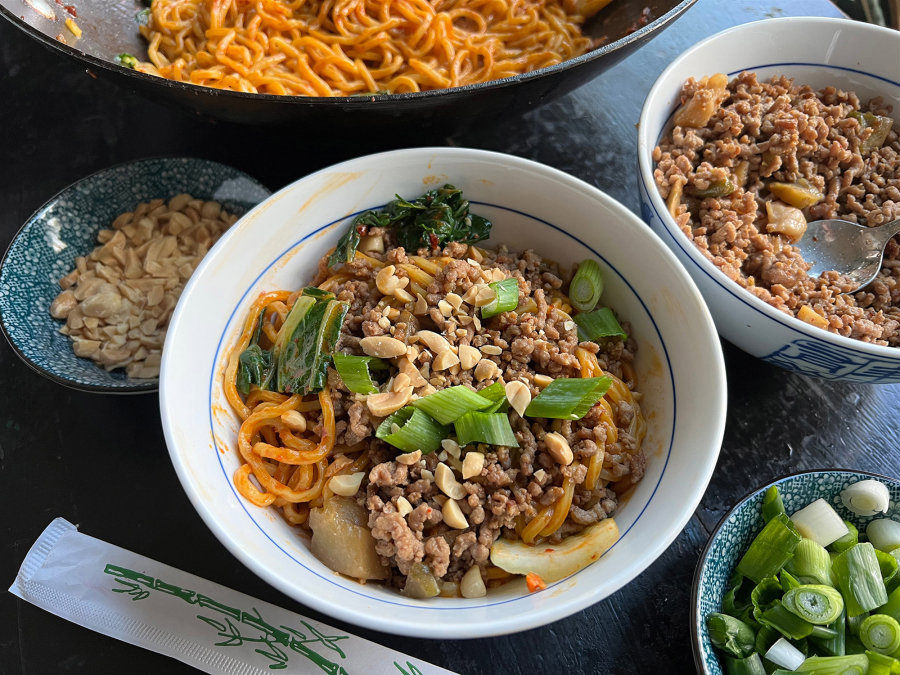I’ve been a fan of chef and culinary scientist J. Kenji Lopez-Alt ever since his first bestselling cookbook, “The Food Lab: Better Home Cooking Through Science,” was published in 2015. So like so many others, I couldn’t wait to get my hands on his highly anticipated follow-up, “The Wok: Recipes and Techniques” (Norton, $50), which hit store shelves on March 8.
It was worth the wait.
The 658-page cookbook grew out of a chapter on the wok that had been edited out of his first cookbook. It makes a compelling case that, when it comes to producing fast, flavorful and versatile meals, nothing beats stir-frying in the traditional Chinese cooking vessel.
Along with an introductory chapter on how to buy, season, clean and maintain a wok, it includes instructions on knife skills and easy-to-follow wok techniques for a variety of meats and vegetables. It also boasts more than 200 recipes — many with mouthwatering photos — for stir-fries, rice, noodles and simple no-cook side dishes such as smashed cucumber salad.
I test-drove the cookbook with one of my favorite Chinese recipes, Dan Dan Noodles, which Lopez-Alt writes “are to Sichuan what the hamburger is to the United States: They’re ubiquitous, there are certain expectations, but there are no hard and fast rules other than the basic ingredients” — noodles, chile oil, pickled Sichuan vegetables, vinegar and lip- and tongue-numbing Sichuan peppercorns.



